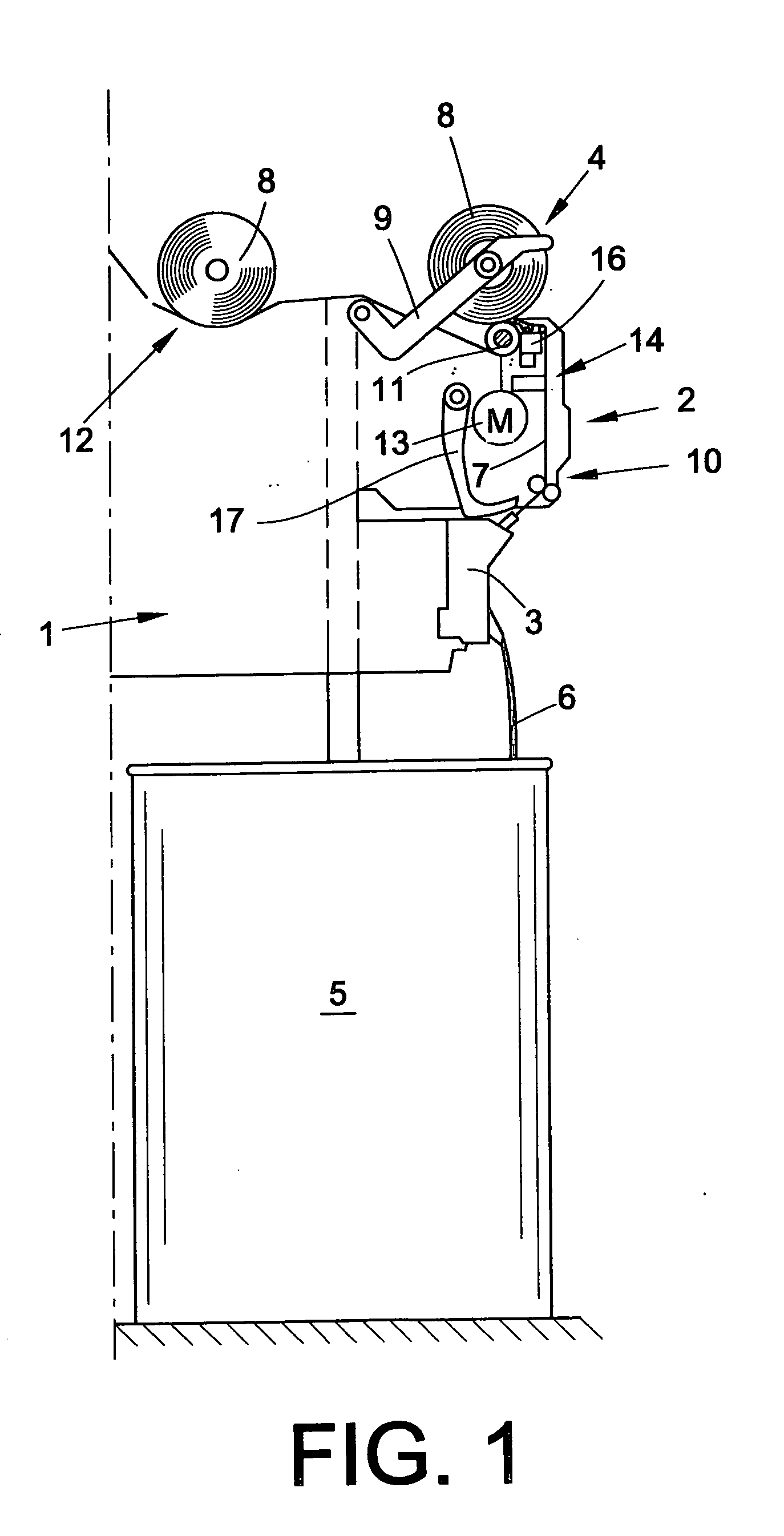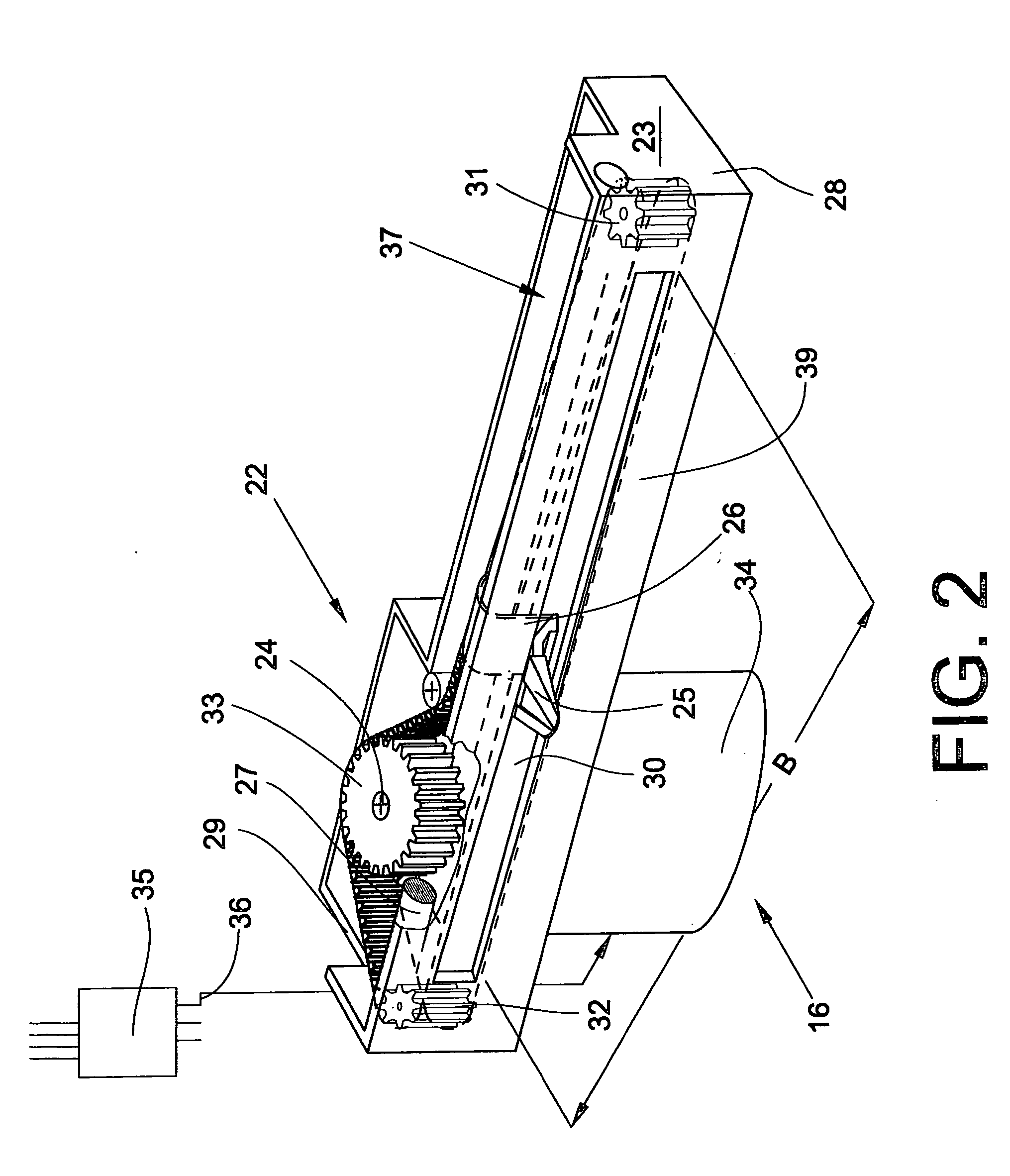Method and device for determining the zero position of a yarn guide capable of cross-winding
a technology of cross-winding and yarn guide, which is applied in the direction of program control, ignition automatic control, instruments, etc., can solve the problems of yarn disadvantage, comparatively large control outlay, and high production cos
- Summary
- Abstract
- Description
- Claims
- Application Information
AI Technical Summary
Benefits of technology
Problems solved by technology
Method used
Image
Examples
Embodiment Construction
[0029] Referring now to the accompanying drawings, one side (i.e., one half) of a cheese-producing textile machine 1, in the exemplary embodiment an open-end rotor spinning machine, is schematically represented in a lateral end view in FIG. 1.
[0030] As known, such textile machines have multiple identical work stations 2 arranged side-by-side between their end frames (not represented). In this case, each of the work stations 2 has a spinning unit 3, as well as a bobbin-winding device 4. Slivers 6 stored in sliver cans 5 are processed into yarn 7 in the spinning units 3 and are subsequently wound into cheeses 8 on the bobbin-winding devices 4. The finished cheeses 8 are conveyed via a cheese transport installation 12 to a loading station (not represented) arranged at the machine.
[0031] As indicated in FIG. 1, the work stations 2 each have still further manipulating arrangements besides the spinning unit 3 and the bobbin-winding device 4, for example a yarn draw-off device 10, a suct...
PUM
 Login to View More
Login to View More Abstract
Description
Claims
Application Information
 Login to View More
Login to View More - R&D
- Intellectual Property
- Life Sciences
- Materials
- Tech Scout
- Unparalleled Data Quality
- Higher Quality Content
- 60% Fewer Hallucinations
Browse by: Latest US Patents, China's latest patents, Technical Efficacy Thesaurus, Application Domain, Technology Topic, Popular Technical Reports.
© 2025 PatSnap. All rights reserved.Legal|Privacy policy|Modern Slavery Act Transparency Statement|Sitemap|About US| Contact US: help@patsnap.com



